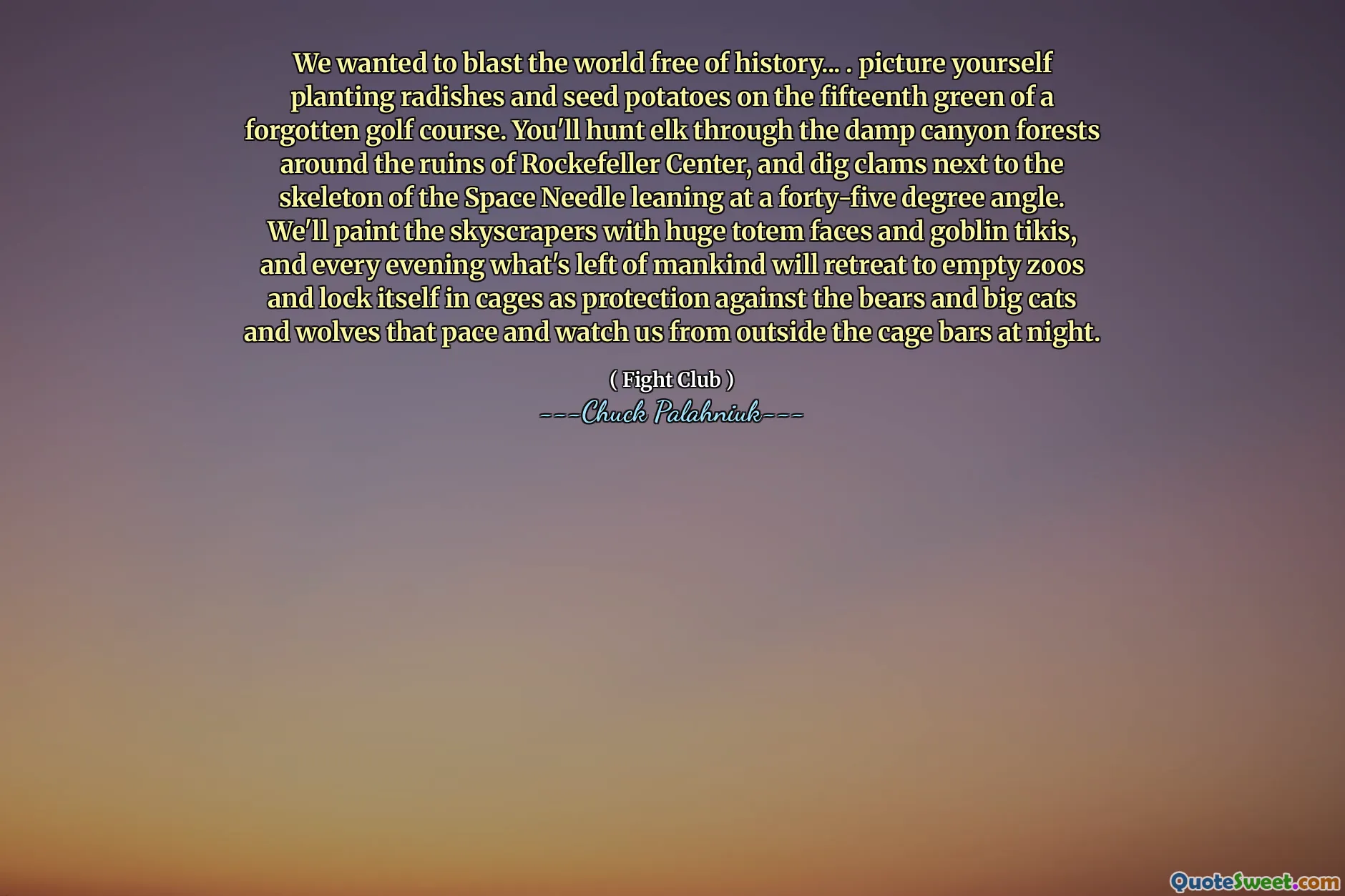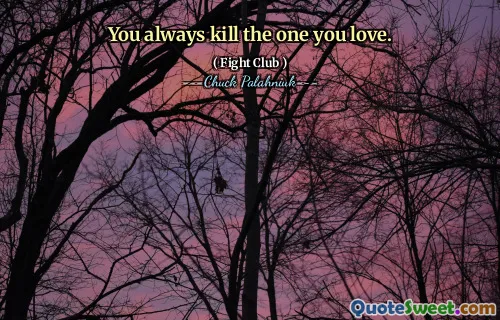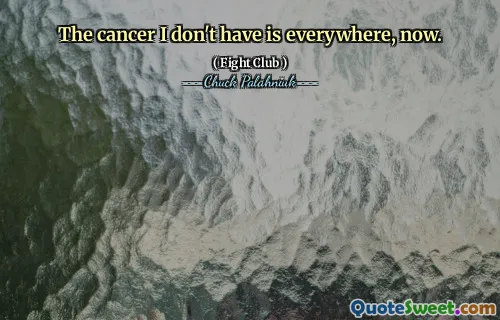
We wanted to blast the world free of history... . picture yourself planting radishes and seed potatoes on the fifteenth green of a forgotten golf course. You'll hunt elk through the damp canyon forests around the ruins of Rockefeller Center, and dig clams next to the skeleton of the Space Needle leaning at a forty-five degree angle. We'll paint the skyscrapers with huge totem faces and goblin tikis, and every evening what's left of mankind will retreat to empty zoos and lock itself in cages as protection against the bears and big cats and wolves that pace and watch us from outside the cage bars at night.
This evocative passage from Chuck Palahniuk's Fight Club offers a stark, surreal vision of a post-apocalyptic world where civilization as we know it has collapsed, allowing nature and primitive human activities to reclaim urban spaces. The imagery evokes a blend of decay and rebirth, as symbols of modern progress like Rockefeller Center and the Space Needle become ruins overtaken by wilderness and reconfigured through indigenous and mythical symbolism such as totem faces and goblin tikis. There is an unmistakable tension between the remnants of human dominance and the resurgence of a more primal, untamed world order.
The quote provokes deep reflection on the fragility of human constructs—both physical and cultural—and how transient our achievements appear when placed against the vast span of time and nature's enduring cycles. Palahniuk wanders into dystopian philosophies and critiques of modern society’s attempt to dominate or erase history, hinting that such efforts are hubristic and ultimately futile. The vision of humanity retreating into cages in former zoos, as predators silently dominate outside, suggests a reversal of power dynamics and perhaps a chastisement for humanity’s past excesses and disconnect from the natural world.
Stylistically, the passage’s dreamlike and apocalyptic tone captures the disarray of a world trying to forget its origins, yet ironically echoing its deep historical layers through the ruins and imagined new rituals. Through this, Palahniuk invites us to consider how history, culture, and environment are indelibly intertwined—and how attempts to shatter or deny this interconnection can lead to dystopia rather than liberation. It’s a meditation on destruction, renewal, and the wild, unpredictable evolution of civilization when it is stripped of its conventional structures.











